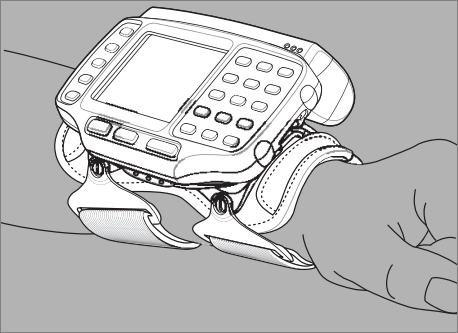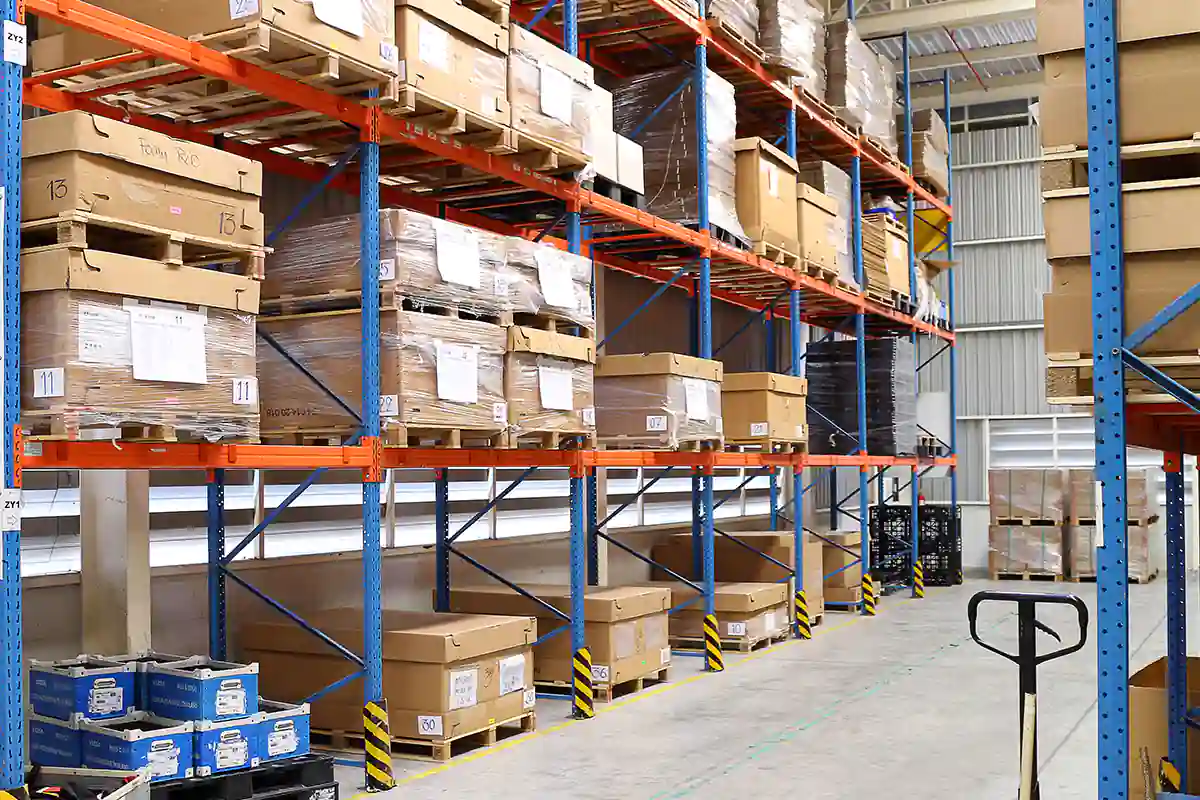Overcome initial hurdles, increase productivity 🚀
Sounds paradoxical: When mobile data acquisition is introduced in the warehouse, the first fruits are often reaped outside. Picking can sometimes even slow down - a circumstance that sometimes unsettles warehouse management. We list up three common causes for this, followed by three tips that increase picking speed.
by Marc Teuber
book1658 words timelapse8 minutes reading time
Online Marketplaces set the Pace 🔗︎
There may be discernment among the majority of decision-makers now: In the age of digitalization/industry 4.0 the fast companies are the winners, the slow ones the losers. In the warehouse and logistics sector, this is primarily about delivery and data speed. To illustrate this trend, just take a look at online marketplaces such as Amazon and Zalando, which are impressively setting the pace here. Fast deliveries, fast automated decisions - this is only possible due to data always being up-to-date.
Many years ago, Amazon was one of the first to show how quickly orders can be processed. “Ordered today, delivered tomorrow.” That was not a full-bodied marketing slogan, but common delivery practice. Amazon achieved this by implementing modern, paperless warehouse and logistics processes and also making fast, automated decisions.
Today, not only B2C customers expect such a speed of delivery, but increasingly also customers from the B2B segment. Not surprising since companies of all sizes and from almost all industries are increasingly forced to measure their service against that of Amazon & Co. In some companies, however, the reality - despite the introduction of a new MDE solution - looks different.
Picking 🔗︎
Working Speed remains the same or slows down 🔗︎
A fact that is often not considered before introducing a new MDE solution:
A new MDE solution does not automatically make warehouse and logistics processes faster. Picking productivity can remain the same or even decrease. 😲
There could be the following reasons:
Reason 1: Existing Processes are slowing down the MDE Solution 🔗︎
In many companies processes have been growing over years. They simply had not been designed for mobile data acquisition. That is why productivity cannot be increased, or only to a limited extent. In order for a MDE solution to really lead to a significant increase in performance, it may be necessary to reorganize the processes first. In these cases, you can’t just put digital solutions on top and assume that there will automatically be the desired result. For example, in some large warehouses, employees have to walk up to 20 kilometres per shift and are on the move for up to 75 percent of their working time. This can be due to an outdated warehouse design or unfavourable warehouse locations that have not been adapted to the new requirements. This is where the advantages of mobile solutions quickly evaporate! A better organization, for example with the ten percent of the most frequently picked articles being clearly categorized and sorted at the front, can remedy the situation and significantly speed up working with MDE solutions. The example makes it clear that corresponding questions should be clarified between the MDE provider and the plant or warehouse management right from the start in order to avoid unpleasant surprises afterwards.
Reason 2: Minimum Technical Requirements are not met 🔗︎
Another common problem is that people concentrate too much on the technology and functionality of the new MDE solution. Other technical requirements play an at least equally important role. Under certain circumstances, additional expenses are added to the licence, hardware and service costs for the new MDE solution. This can delay the point you can enjoy the advantages of MDE. Some important points here are Wi-Fi coverage in the warehouse, item barcode labelling and the depth of integration between the MDE solution and the ERP system.
Poor Wi-Fi Coverage 🔗︎
Wi-Fi is one of the most common technologies used for mobile data transmission in the warehouse. However, a MDE solution can only develop its full potential if there is a good Wi-Fi coverage in the warehouse. This is the only way to ensure that data flows uninterrupted and in real time. However, a continuous Wi-Fi connection is not always given in practice. The reasons for this are outdated or insufficiently powerful Wi-Fi devices and, last but not least, the warehouse conditions. For example, if there are many large metal shelves in the warehouse, this can dampen the signal strength.
Inadequate Barcode Labelling 🔗︎
In other cases, barcode labelling is insufficient. Barcodes are then missing from many storage locations and items, for example. Or there are only 1D barcodes used with limited information content and being more prone to errors. Here it might be worth switching to 2D barcodes: They can store more information and are still readable even if partially damaged. Not all barcodes are the same. There are major differences in their suitability for different purposes.
Choosing an incorrect Integration Level with the ERP System 🔗︎
An unsuitable integration level of different software leads to a delay in data exchange. If this data exchange is delayed, e.g. due to a weak integration depth, by means of batch processing, important advantages can quickly fizzle out. It is therefore technically advantageous if the MDE solution has been written in the same programming language as the ERP software. In this way, a close interlocking between both software systems can be established. As a result, both solutions have the same user interface and can exchange data in real time. For example, the MDE solution DATACAP is such a product being integrated into Dynamics 365 Business Central and communicating seamlessly.
Reason 3: Not considering Gains in Back Office 🔗︎
The biggest benefits of mobile data collection are often not initially noticeable in the warehouse itself, but in the back office. Mobile data solutions are introduced, for example, to regularly update data inventories. Furthermore, in order to achieve a better informative value based on the data situation and subsequently to be able to make better decisions. When picking slips are automatically entered into the ERP system because manual data entry is no longer necessary, the effects are especially noticeable in the back office. If only considering the perspective of warehouse management, it is difficult to see the investment benefit of a new MDE solution.
The persons being responsible should consider these circumstances and communicate them to the operational management or the warehouse management as well as to the employees involved. This avoids disappointment if the new solution does not result into the savings expected at first or if there are even temporary additional expenses. The field of vision should be enlarged and attention should be paid to what the solution will bring in the long term for the entire company.
If the aforementioned conditions have been created, the following tips can further help you create higher work intensity.
1. Tuning Mobile Data Acquisition: Scanning with Acoustic Signals 🔗︎
The fact that a barcode scanner confirms a scanning process positively or negatively with a signal tone may seem unremarkable. However, this feature can save a lot of time and speed up order picking. When scanning, warehouse staff usually looks at the barcode and not at the scanner display to aim on it. Yet the successful scan is being confirmed by an appropriate acoustic signal, looking at the scanner display to check is no longer necessary. This may only save one second per scan, but the following rough calculation should make you think anyway:
Recalculating Time Savings 🔗︎
If you calculate with a time saving of one second per scan and 60 items per hour, the result will be a saving of 8 minutes per 8-hour-shift. Calculated over the year, that’s about 34 hours (per month, with an average of 21 working days, you save 2.8 hours). If you monetize this time saving, you save an annual sum in the high three-digit euro range per barcode scanner or warehouse employee.
By integrating such a small thing you can recover a high-quality portable barcode scanner after only one year. The calculation is based on one working day with one shift. For working days with two or three shifts, the amounts would double or triple accordingly.
2. Tuning Mobile Data Acquisition: Using Forearm or Ring Scanners 🔗︎
Ring scanners can also significantly increase the productivity of a warehouse worker. In contrast to conventional barcode scanners, it is attached to the wrist or finger.
This way, both hands remain free for picking. The employees' work performance can increase significantly. This is why you should consider this circumstance from the very beginning. If you choose a different solution at first, a change afterwards will often be time-consuming and expensive.

3. Tuning Mobile Data Acquisition: Allowing optimal Matching of Hardware and Software 🔗︎
Another important point is the matching of scanner Software to the existing hardware. Often, you do not have the optimal hardware. It is either outdated or not powerful enough. Furthermore, keyboard or handle may not be suitable for the task. Keys may be too small or you may have chosen touch screens for tasks where staff often work in gloves. Another common problem is a weak or vulnerable battery.
High-quality Hardware provides Safety Cushion 🔗︎
Conflicts between hardware and software can sometimes be due to too cheap barcode scanners. Relatively cheap devices are not generally bad. However, it is important to know about and be able to evaluate the own need an its progression as precisely as possible over the entire life cycle. If you do not have this knowledge or the time to deal with this in detail, it often makes sense to directly invest in a higher-quality solution. More expensive devices usually provide more functionality and robustness, so you are on the safe side. In many cases, frustrations and costs in connection with a premature new investment can thus be avoided later on. Hardware options should be discussed sufficiently in advance and, if necessary, test setups should be ordered. There are some selection criteria to be considered.
Advantages of Scanner Masks that can be designed 🔗︎
Another problem: Scanner software is not optimally geared to the work process. For example, default scanner masks are way too extensive and complicated or cannot be adapted. Perhaps you also need an input option or a value display that is not available in the standard version. In such cases, you should take care that the scanner masks do not just configure themselves, but are fully customizable and designable.
How to prepare Warehouse Processes for Mobile Scanner Implementation
You will not always immediately realize the performance increases expected from the implementation of new MDE solutions. In many cases, this is due to underlying warehouse processes. Furthermore, efficiency gains in neighbouring departments or in the back office will often not receive attention. In the following article, we will explain, what should be kept in mind.
How to find the right Barcode Type
Barcodes have long been indispensable in warehouses. They make a significant contribution to data acquisition and help to optimally track items, merchandise and consignments. But not all barcodes are the same. There are major differences in their suitability for different purposes. We explain what these are about.

